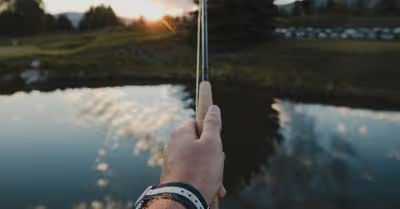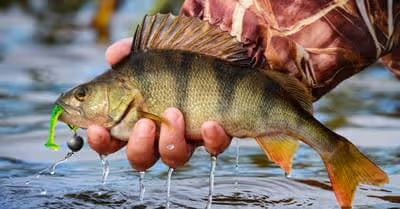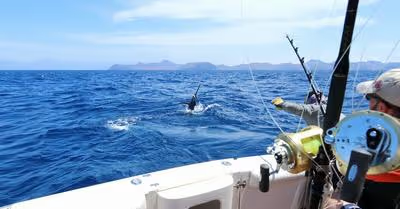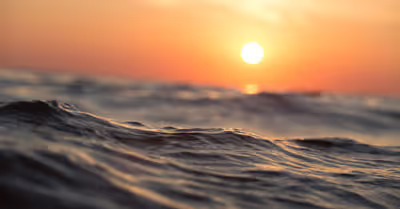Table of Contents
What is a Fishing Reel?
A fishing reel is basically a mechanical device that helps an angler to hold and spool out the fishing line. In addition to the handle that helps you retrieve the line, it has a drag system (brake system) to help you slow down a fish that’s attempting to run from the line, as well as a bracket to help you fasten the fishing reel to the fishing rod.
In essence, a fishing reel plays a crucial role in helping you control your fishing line and in retrieving the fish. With a fishing reel, your job out on the water will be a lot easier and your fishing experience will be much fun.
How to Choose a Fishing Reel
When it comes to choosing the perfect fishing reel, there are a lot of factors besides the reel’s main features that should come into play. But before going into that, let’s look at the main types of fishing reels.
Reel Types
While there’s a wide range of fishing reels on the market such as electric reels, trolling reels, and surf reels, there are only four main types of fishing reels to consider when choosing a perfect fishing reel.
Spin Cast Reels – These are probably the most popular types of fishing reels. They’re great for both novice and experienced anglers since they’re versatile and simple to use and mount on the underside of the fishing rod.
A great feature of spin-cast reels is the position of the handle. They generally have the handles on the left-hand side instead of the right. This anti-reverse mechanism is essential in keeping your line from spooling off when a fish bites. If you’re planning to fish on saltwater, you should choose a spin cast reel with a skirted spool. This is to protect the inside mechanisms of the spool from salt and moisture. It can also increase your fishing line capacity, which is essential if you want to reduce tangles and to allow longer casting.
A major downside is that spin-cast reels can only support smaller fishing lines and smaller baits. They’re also not very durable and can cause serious tear and wear to the fishing line.
Fly Reels – They’re perfect for both saltwater and freshwater. While they are great for right-handers, you can operate them with both hands, which makes them quite versatile. For this reason, you should make sure that the fly reel is reversible.
Bait Caster Reels – Great for both freshwater and saltwater, these types of fishing reels are perfect if you want to cast farther or when you are targeting bigger fish, which calls for bigger baits or lures.
Although they can be difficult to use if you’re a beginner angler, they’ll work great if you’re more experienced as they need a whole new level of expertise. Well, this is because they have a complex design that will constantly have your fishing line tangled if you’ve not mastered how to perfectly operate the reel.
Spinning Reels – These are great for saltwater and are perfect for smaller baits and smaller fishing lines. The fact that they’re easy to set up and operate makes them ideal if you’re still learning the fishing ropes.
It doesn’t easily tangle your line and also allows you to relax as it has a holder where you can place your fishing rod and let it do the hard work for you.
The Drag System
Another important part of a fishing reel to look at when choosing the right reel is the drag system. This is some sort of a brake, which is crucial when you’re casting or when fighting larger fish species. While older drag systems are permanently fixed and cannot be adjusted, modern models are flexible and can be adjusted. The most common types of drag systems include:
Spring and Pawl – Also known as “Click and Pawl,” this type of a drag system has a spring that pushes the pawl into the gear on the reel spool to apply the brake or drag. This is perfect for light fishing.
Disc Drags – These are the smoothest types of drag systems. They’re also the most common types. They have a cork or synthetic materials that provide consistent pressure to give you the utmost control and efficiency even if you’re fighting large and strong fish.
Caliper Drags – These are designed with caliper pads to push against the braking system of the spool.
Reel Sizes
Choosing an appropriate fishing reel size is also important when choosing the perfect reel for your fishing adventures.
Small (10-20 pounds) – These are perfect for light fishing in a lake, river or nearby stream. You should use them with fishing rods measuring around 6-8 ft. long and 1-5 kgs in weight.
Medium (40-50 pounds) – Perfect for fishing rods measuring 8-10 ft. long and 5-10 kgs in weight. They’re perfect for targeting larger fish in rivers, lakes, and harbors.
Large (60-100 pounds) – These are great for deep-sea fishing. You should use them if you’re targeting heavier fish and want to use longer lines in rocky areas. They’ll also work superbly with fishing rods of varying lengths and weights (but this should depend on your fishing location).
Reel Speed and Gears
The speed of your reel plays a crucial role in how faster you can retrieve your fishing line, especially when the fish is hooked. In other words, a reel speed is principally the number of times the spool can rotate when you rotate the reel’s handle once.
With that in mind, a fishing reel with a larger gear ratio will wind your fishing line faster and vice versa. Higher gear ratios of say 6.4:1 or higher are perfect if you want to catch swift fish species and cast nearer. On the other hand, lower gear ratios of say 6.1:1 or lower might not be faster but are ideal if you need more power for larger fishes or to cast farther.
Again, keep in mind that there are single and multiple gears with the former being more expensive.
Saltwater vs. Freshwater
It’s of great importance to know your fishing conditions before spending your hard-earned cash on a fishing reel. Generally, reels meant for freshwater require less protection against aggressive corrosion and will be relatively cheaper. Differently, reels meant for saltwater should have corrosion-resistant materials such as forged aluminum, bronze bearings, shielded stainless steel, and anodized aluminum, which makes them pricier.
Bearings vs. Bushings
You can choose fishing reels designed with bushings if you’re looking for smaller and cheaper options. On the other hand, you might want to choose reels designed with ball bearings if you want quality reels that offer smoother action even when pressured by big fish species. Remember; more ball bearings indicate that the reel is of great quality.
Fishing Method or Location
One of the most important things to look at before even setting your foot in a tackle store for a fishing reel is your fishing method or location. Ask yourself; where will I be fishing from? If you’ll be fishing from a boat, go for a simple fishing reel. This is because you can move freely which is essential in reducing the stresses on the fishing reel, rod, and line.
Conversely, you may need a more complex and high-quality reel if you’re planning to fish from the bank, harbor, pier or the surf. This is because you’ll be fighting fish from a stationary position.
Bottom Line
To this end, understanding how to choose a fishing reel is of great importance if you want to be successful out on the water. In addition to going for a durable reel, it’s essential to choose a high-quality fishing reel that guarantees well-balanced features. With a perfect fishing reel, you’ll feel good when casting, holding, retrieving or fighting your catch!
Recent Articles
















